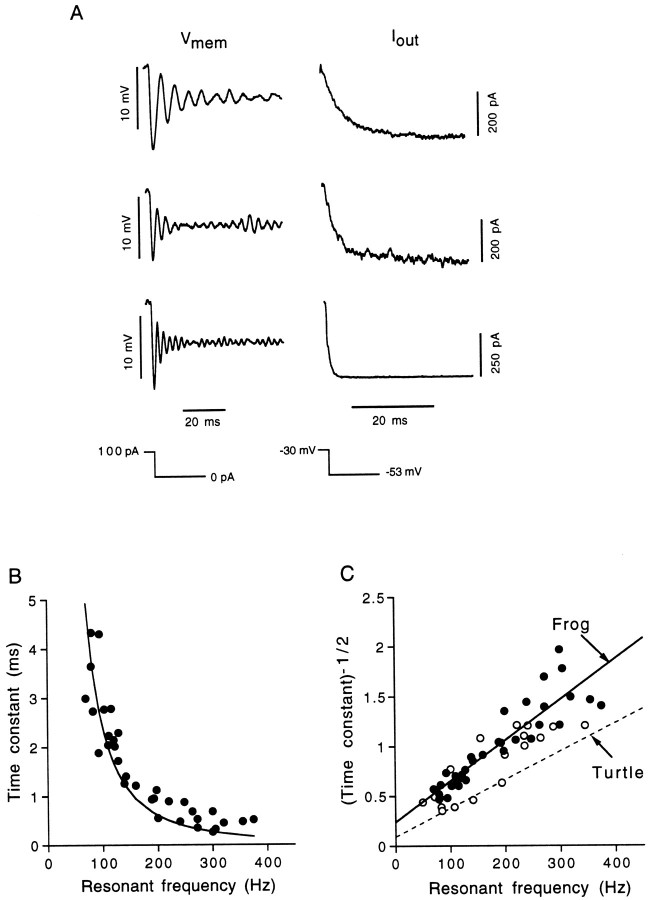Fig. 12.
Resonant frequency changes with the time constant of the outward current. A, Offset resonant frequencies (recorded in current-clamp mode) oscillating at a common membrane potential of approximately −53 mV are presented on theleft, along with their corresponding net outward tail currents on the right (recorded in voltage-clamp mode) at −53 mV after a 200 msec voltage step to −30 mV. Holding potentials in current-clamp mode were maintained at approximately −53 mV with small standing currents. Offset oscillations followed a 100 pA current pulse. The time constant of outward current relaxation (τd) is progressively faster in higher frequency hair cells. Top, 100 Hz; Qeof 6.5; τd of 6.0 msec; middle, 170 Hz;Qe of 2.5; τd of 3.1 msec;bottom, 240 Hz; Qe of 3.6; τd of 1.8 msec. B, Resonant frequency (ƒo) at −53 mV is plotted against τd at −60 mV after a 200 msec step to −30 mV. The data were well fit by an equation of the form τd ofk/ƒo2; (k = 24133.6; r2 = 0.88;n = 33). C, Here, the inverse square root of the time constant is plotted against resonant frequency. Data fit with a straight line (y = 0.004x + 0.24; r2 = 0.82). Open circles represent data collected from hair cells isolated without using papain as a dissociative agent. Thedashed line represents the relationship reported for the turtle BP, taken from Art and Fettiplace, 1987. The turtle line is lower primarily because those tail currents were measured at potentials 10 to 20 mV positive to the −60 mV used in our study of the AP.

